B Class Battery Replacement: Essential Power Solution
Replacing your Mercedes-Benz B-Class battery is a straightforward DIY task that ensures your vehicle runs smoothly. This guide provides a clear, step-by-step process, vital tools, and essential tips to help you complete the battery replacement confidently and efficiently, restoring reliable power to your B-Class.
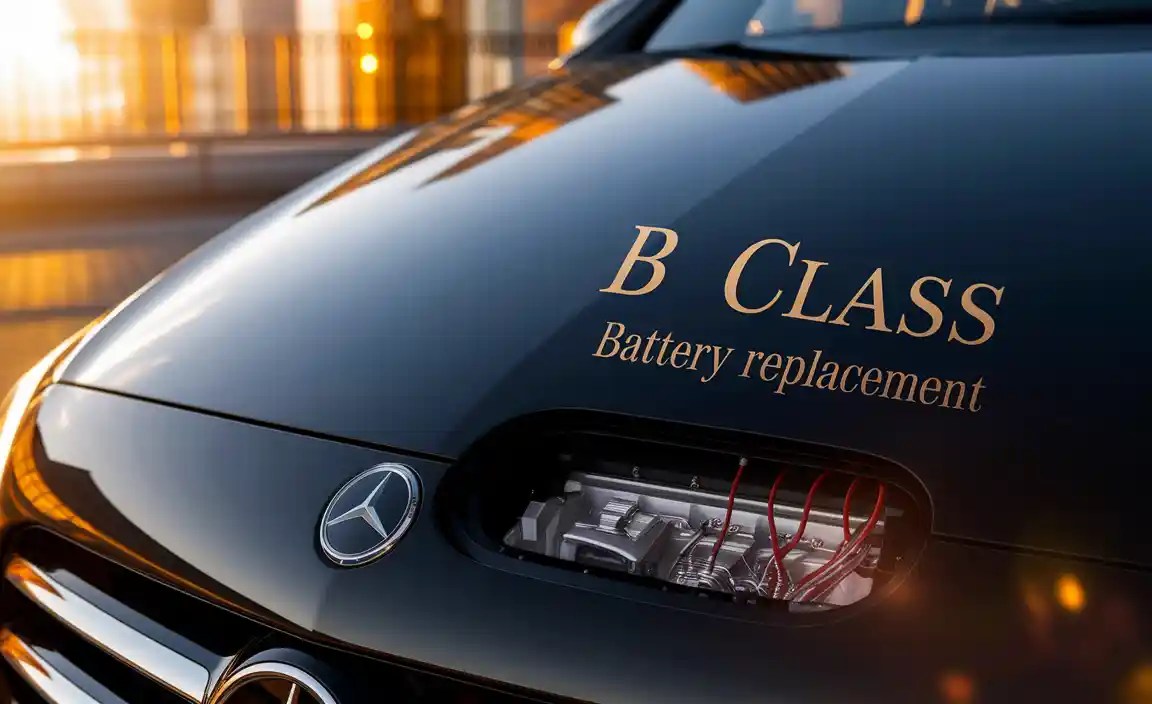
The heart of your Mercedes-Benz B-Class, like any vehicle, is its battery. It’s the unsung hero that starts the engine, powers your electronics, and keeps everything running. When this vital component begins to fade, it can lead to a host of frustrating issues, from slow cranking to complete power loss. For many B-Class owners, the prospect of a battery replacement might seem daunting, conjuring images of complex electrical systems and specialized tools. However, replacing the battery in your B-Class is a more accessible DIY project than you might think. This guide is here to demystify the process, offering clear, actionable steps and expert advice to ensure you can handle this essential maintenance with confidence. We’ll walk you through everything you need, from identifying the right battery to safely completing the job, ensuring your B-Class gets the power it deserves.
Why Your B-Class Needs a Healthy Battery
Your Mercedes-Benz B-Class relies on its battery for much more than just starting the engine. It’s the power source for the sophisticated electronic systems that define the Mercedes-Benz experience. From the infotainment system and climate control to advanced safety features like adaptive cruise control and lane-keeping assist, all require a stable and robust electrical supply. A failing battery can cause these systems to malfunction, leading to inconvenient performance issues or even compromising safety.
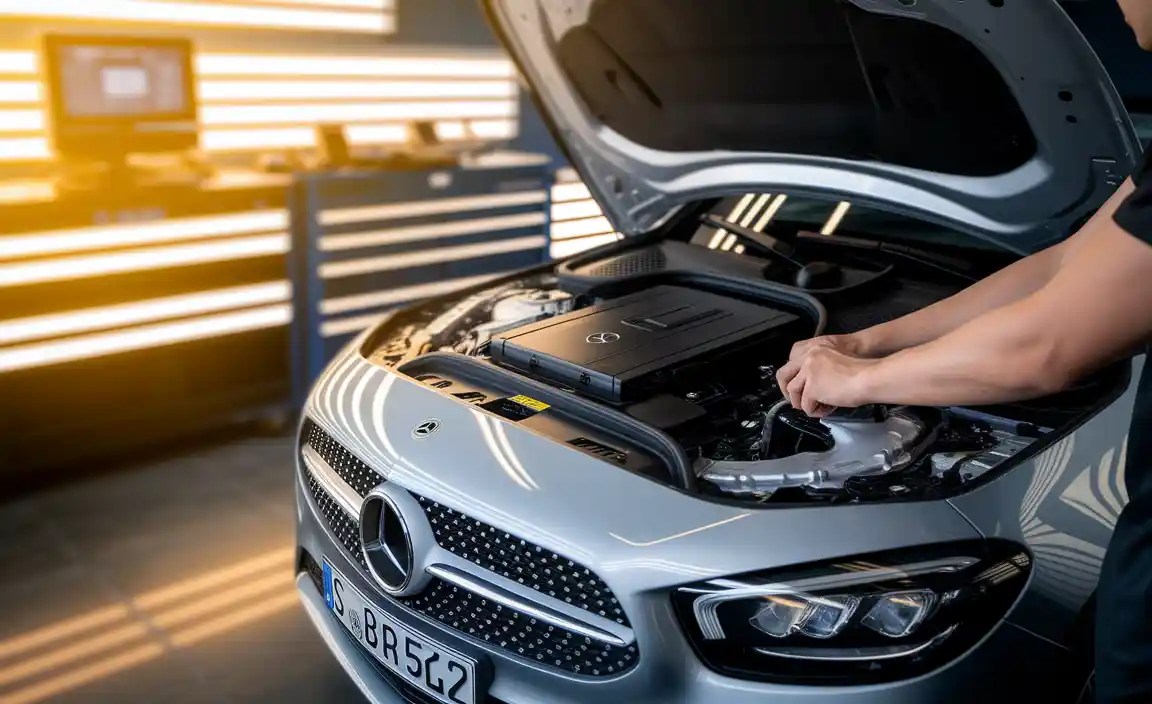
Signs of a Weak or Dying B-Class Battery
Recognizing the early signs of a battery problem can save you from unexpected breakdowns and costly repairs. Pay attention to these common indicators:
Slow Engine Crank: When you turn the key or press the start button, if the engine cranks slower than usual, it’s a classic sign that the battery is struggling to deliver sufficient power.
Dimming Lights: Headlights, interior lights, or dashboard lights that appear dimmer than normal, especially when the engine isn’t running or at idle, indicate low battery voltage.
Warning Lights: Modern vehicles have sophisticated diagnostic systems. The battery warning light on your dashboard illuminating could mean a charging system issue or a weak battery.
Corrosion on Battery Terminals: A white or blueish powdery substance around the battery posts (terminals) suggests a chemical reaction, often meaning the battery is leaking or has been overcharged, both detrimental to its health.
Electrical Accessory Malfunctions: Power windows operating slowly, the radio cutting out, or the navigation system resetting unexpectedly can all be symptoms of an unreliable power supply from a failing battery.
Age of the Battery: Car batteries typically have a lifespan of 3-5 years. If your B-Class battery is reaching or exceeding this age, it’s prudent to consider replacement even if you haven’t noticed symptoms.
Choosing the Right B-Class Battery
Selecting the correct replacement battery is crucial for the optimal performance and longevity of your B-Class. Mercedes-Benz vehicles, especially those with advanced electronics, often have specific battery requirements.
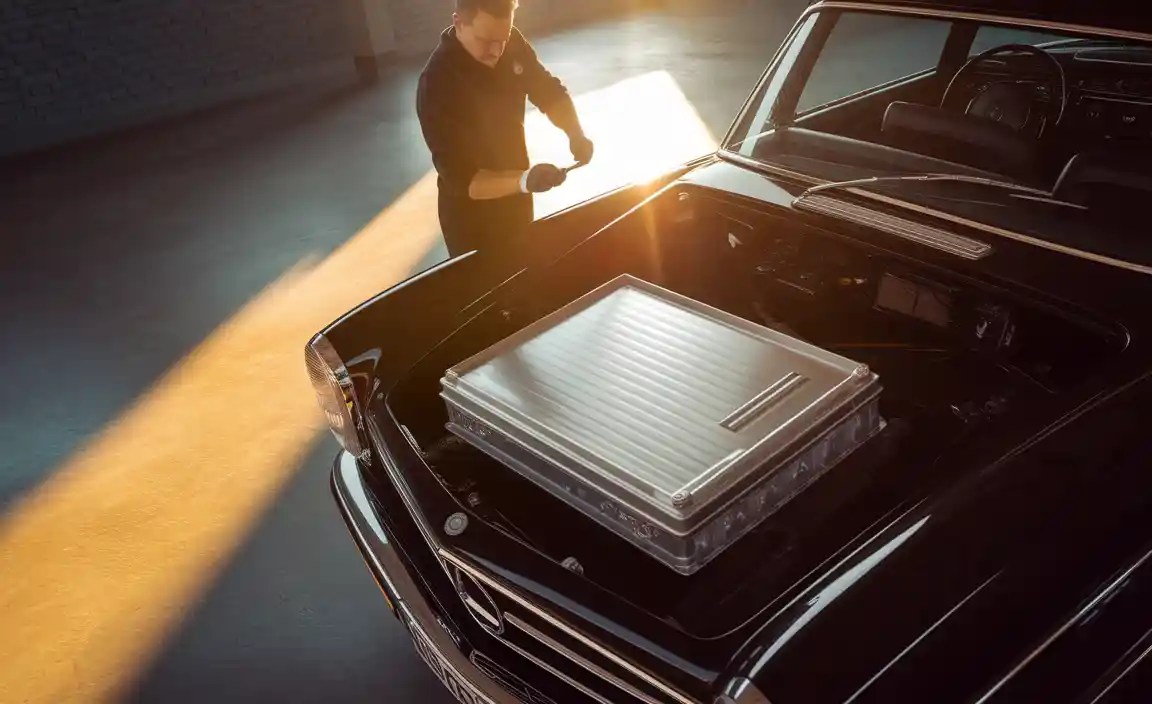
Key Battery Specifications to Consider
When purchasing a new battery, look for these essential specifications:
Group Size: This is a standardized sizing system that determines the physical dimensions of the battery, ensuring it fits correctly in the battery tray and that the terminals are in the right position for cable connections. For the Mercedes-Benz B-Class, common group sizes include Group 065R or Group 065. Always confirm the exact group size for your specific B-Class model year and trim.
Cold Cranking Amps (CCA): This rating indicates the battery’s ability to start an engine in cold temperatures. Higher CCA values are generally better, especially if you live in a region with harsh winters. Mercedes-Benz specifies a minimum CCA for optimal performance.
Reserve Capacity (RC): RC measures how long the battery can supply power if the alternator fails. A higher RC means the battery can power essential accessories for a longer period.
Voltage: While virtually all car batteries are 12-volt, ensure you are purchasing a standard 12-volt lead-acid or AGM battery, as specified by Mercedes-Benz.
Type of Battery: Many modern Mercedes-Benz vehicles, including some B-Class models, require an Absorbent Glass Mat (AGM) battery. AGM batteries offer better performance, longer lifespan, and are more resilient to vibrations and deep discharges compared to traditional flooded lead-acid batteries. They are also sealed and maintenance-free. If your original battery is AGM, it’s highly recommended to replace it with another AGM battery.
Where to Find Your B-Class Battery Information
Owner’s Manual: Your B-Class owner’s manual is the most reliable source for battery specifications.
Existing Battery: The specifications are usually printed on the label of your current battery.
Online Resources: Reputable auto parts retailers’ websites often have vehicle lookup tools that suggest compatible batteries.
Mercedes-Benz Dealership: For definitive confirmation, a Mercedes-Benz dealership can provide precise battery part numbers and specifications.
Essential Tools and Materials for Battery Replacement
Having the right tools on hand makes the process of replacing your B-Class battery smoother and safer.
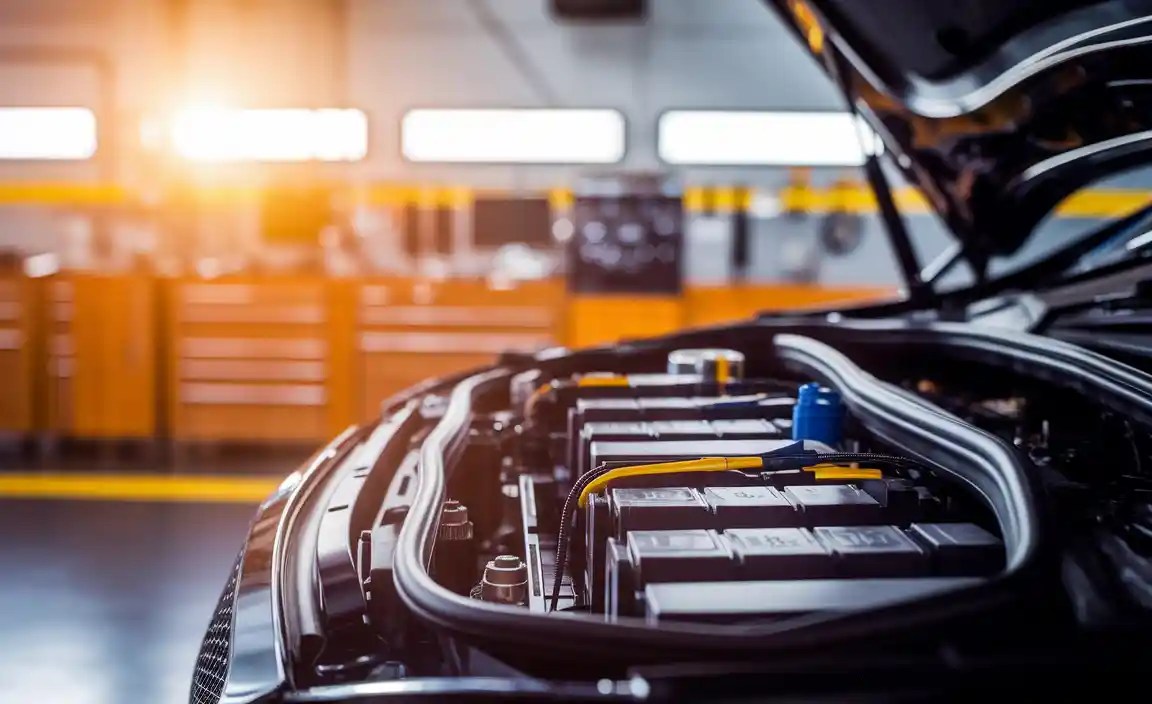
Tools You’ll Need:
Socket Wrench Set: With various socket sizes, including 10mm, 13mm, and possibly others for terminal clamps and hold-down brackets.
Wrench Set: Similar to sockets, a set of open-end or box-end wrenches can be useful.
Terminal Cleaner Brush: Specifically designed to clean battery terminals and cable connectors, ensuring good electrical contact.
Gloves: Acid-resistant work gloves are essential for protecting your hands from battery acid.
Safety Glasses: Always wear safety glasses to protect your eyes from corrosive acid and debris.
Battery Terminal Protector Spray or Grease: To prevent corrosion on the new battery terminals after installation.
Small Rag or Paper Towels: For cleaning up any residual dirt or acid.
Memory Saver (Optional but Recommended): A device that plugs into the OBD-II port or cigarette lighter to maintain power to the car’s electronics (radio presets, clock, immobilizer system) while the battery is disconnected. This prevents losing settings and potentially requiring a PIN code for your radio. You can learn more about OBD-II ports from resources like Volvo.
Pliers: May be needed for tight connections or stubborn clamps.
Materials:
New Replacement Battery: Ensure it meets the specifications outlined above.
Water and Baking Soda: To neutralize any spilled battery acid (use sparingly and with caution).
Step-by-Step Guide: B Class Battery Replacement
Replacing the battery in your Mercedes-Benz B-Class is a task you can accomplish with patience and attention to detail. Follow these steps carefully for a safe and successful replacement.
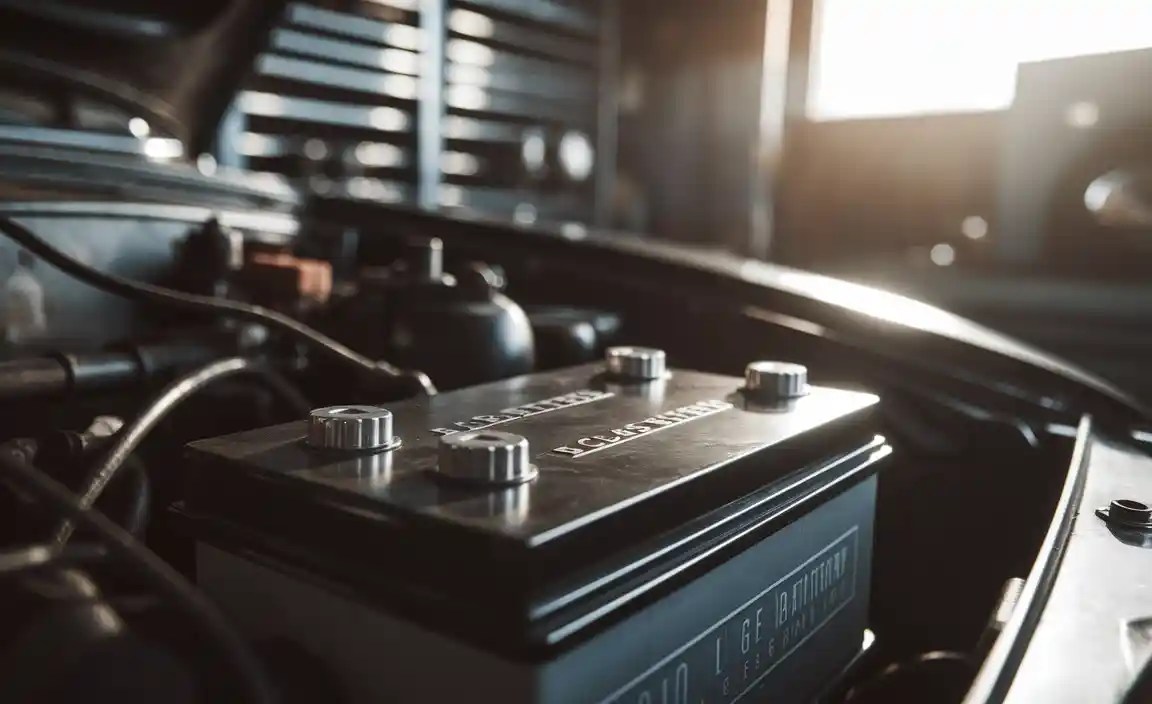
Step 1: Prepare Your Vehicle and Safety First
1. Park on a Level Surface: Ensure your B-Class is parked on a flat, stable surface.
2. Engage Parking Brake: Apply the parking brake firmly.
3. Turn Off Engine and All Electronics: Make sure the ignition is off and all lights, radio, and accessories are turned off.
4. Open the Hood: Locate the hood release lever inside the cabin (usually on the driver’s side, near the steering column) and pull it. Then, release the secondary latch under the hood and lift it. Secure it with the prop rod or note how it is supported.
5. Wear Safety Gear: Put on your gloves and safety glasses. Batteries contain sulfuric acid, which is corrosive.
Step 2: Locate the Battery
In most Mercedes-Benz B-Class models, the battery is located in the engine compartment, typically on one side. It’s usually covered by a plastic shroud or a bracket. Consult your owner’s manual if you have trouble finding it.
Step 3: Disconnect the Old Battery
This is the most critical step for electrical safety. Always disconnect the negative terminal first.
1. Identify Terminals: The battery has two terminals: positive (+) and negative (-). The negative terminal is usually marked with a black cover or a “-” symbol, and the positive terminal with a red cover or a “+” symbol.
2. Disconnect Negative Terminal: Using the appropriate wrench (often 10mm), loosen the nut on the clamp connecting the negative cable to the battery post. Once loose, carefully twist and pull the cable connector straight up and off the terminal. Move the cable away from the battery so it cannot accidentally touch the terminal.
3. Disconnect Positive Terminal: Now, loosen the nut on the clamp for the positive cable. Twist and pull the connector straight up and off the terminal. Again, ensure the cable is positioned so it cannot come into contact with the battery.
4. Remove Battery Hold-Down Bracket: The battery is secured in place by a hold-down bracket. This might be a clamp at the base of the battery or a strap across the top. Use the appropriate socket or wrench to remove the bolts or nuts securing this bracket. Keep track of these fasteners, as they’ll be needed for the new battery.
Step 4: Remove the Old Battery
1. Lift Out Battery: Once the hold-down bracket is removed, you can lift the old battery out of its tray. Batteries are heavy (often 30-40 lbs or more), so lift with your legs, not your back. Be careful not to tilt the battery excessively, which could cause any remaining acid to spill.
2. Inspect Battery Tray: While the battery is out, inspect the battery tray for any signs of corrosion or damage. Clean out any debris.
Step 5: Install the New Battery
1. Clean Terminals and Tray: Use the terminal cleaner brush to clean the inside of the cable connectors. Ensure the battery tray is clean and dry.
2. Position New Battery: Carefully place the new battery into the battery tray, ensuring it’s oriented correctly so the positive and negative terminals align with the corresponding cables.
3. Secure Hold-Down Bracket: Reinstall the battery hold-down bracket and tighten the bolts or nuts securely. The battery should not move when you try to wiggle it.
Step 6: Connect the New Battery
This is the reverse of the disconnection process. Always connect the positive terminal first.
1. Connect Positive Terminal: Place the positive cable connector onto the positive (+) terminal post. Tighten the nut securely with your wrench.
2. Connect Negative Terminal: Place the negative cable connector onto the negative (-) terminal post. Tighten the nut securely.
3. Apply Terminal Protector: Spray or apply battery terminal protector grease to the terminals and clamps. This helps prevent corrosion and ensures a good connection.
Step 7: Final Checks and Start-Up
1. Double-Check Connections: Ensure all cable connections are tight and that no tools or foreign objects are left in the engine bay.
2. Lower Hood: Close the hood and secure it.
3. Start Engine: Start your B-Class. The engine should crank and start normally.
4. Check Electronics: Verify that your radio, clock, and other electronic systems are functioning correctly. If you used a memory saver, settings should be preserved. If not, you may need to reset your clock and radio presets and potentially re-enter your radio’s security code if applicable.
5. Dispose of Old Battery Properly: Never dispose of an old car battery in regular trash. They contain hazardous materials. Take it to an auto parts store, a recycling center, or many local service stations that accept them for recycling. Many retailers offer a core charge when you buy a new battery, which is refunded when you return the old one. You can find local disposal options through resources like Earth911.
Common Issues and Troubleshooting during Replacement
While the process is generally straightforward, minor issues can arise during a DIY battery replacement.
Stuck Terminal Clamps: If a terminal clamp is corroded and stuck, avoid excessive force. You might try a penetrating lubricant, but be cautious around the battery. Sometimes, gently tapping the clamp with a rubber mallet can help loosen it.
Wrench Slips: Ensure you are using the correct size socket or wrench and that it fits snugly on the nut.
Battery Too Heavy: If you find the battery too heavy to comfortably lift, ask for assistance. A strained back is not worth the savings.
Electronics Not Working After Replacement: This could indicate a loose connection or that the vehicle’s system needs to re-learn some parameters. Double-check all connections. Some Mercedes-Benz models may require a specific initialization procedure after a power interruption for certain systems. If problems persist, consult your owner’s manual or a qualified technician.
Table: B-Class Battery VS. General Purpose Battery
Understanding the differences can highlight why using the correct specifications is vital for a Mercedes-Benz.
| Feature | Mercedes-Benz B-Class Specified Battery (Often AGM) | General Purpose Car Battery (Flooded Lead-Acid) |
|---|---|---|
| Technology | Absorbent Glass Mat (AGM) – electrolyte is absorbed in fiberglass mats. | Flooded Lead-Acid – electrolyte is a liquid solution. |
| Power Output | Designed for high power demands of modern electronics, stable voltage. | Can vary, may not consistently support complex electrical systems. |
| Lifespan | Generally longer (5-7 years or more) due to robust construction. | Typically 3-5 years. |
| Vibration Resistance | Excellent, better suited for the vehicle’s chassis. | Average, more susceptible to damage from constant vibration. |
| Spill Proof | Sealed and spill-proof, can be mounted in various orientations. | Can spill if tilted, requires upright mounting. |
| Recharge Rate | Can accept higher charge rates, faster recharging. | Slower recharge rates. |
| Cost | Higher initial cost. | Lower initial cost. |
| Maintenance | Maintenance-free. | May require checking electrolyte levels (distilled water). |
When to Seek Professional Help
While battery replacement is a common DIY task, there are situations where it’s best to let a professional handle it:
Uncertainty about Battery Type: If you’re unsure whether your B-Class uses a standard lead-acid or an AGM battery, or if it has a start-stop system requiring a special EFB or AGM battery, consult a professional.
Corrosion and Damaged Cables: If battery terminals or cable connectors are severely corroded or damaged, professional repair might be needed.
Electrical System Issues: If your car experiences other electrical problems beyond a weak battery, a professional can diagnose the root cause.
Lack of Tools or Confidence: If you don’t have the necessary tools or feel uncomfortable performing the procedure, a certified mechanic can do it quickly and safely.
Frequently Asked Questions (FAQ)
Q1: How often should I replace my B-Class battery?
Most car batteries, including those in the Mercedes-Benz B-Class, have a lifespan of 3 to 5 years. However, this can vary depending on climate, driving habits, and the type of battery. It’s wise to have your battery tested annually after the third year.
Q2: Can I use a regular car battery if my B-Class requires an AGM battery?
It is strongly recommended to replace an AGM battery with another AGM battery. AGM batteries are designed to handle the higher electrical demands and charging cycles of modern vehicles with many electronic features, like the B-Class. Using a standard flooded battery may lead to premature failure of the battery and potential issues with your car’s electronics.
Q3: What happens if I connect the battery cables in the wrong order?
Connecting the cables in the wrong order (positive first, then negative) can cause a battery to explode, damage sensitive electronic components in your car, and potentially injure you. Always disconnect the negative terminal first and reconnect it last. For connection, connect the positive terminal first and the negative terminal last.
Q4: My B-Class has a Start/Stop system. Does this affect battery replacement?
Yes. Vehicles with Start/Stop systems typically require specialized AGM or EFB (Enhanced Flooded Battery) batteries designed to withstand frequent deep discharges and recharges. Using a standard battery in a Start/Stop equipped vehicle will significantly shorten its lifespan and may affect system performance. Ensure you purchase the correct battery type as specified by Mercedes-Benz.
Q5: Do I need a memory saver for my B-Class battery replacement?
A memory saver is highly recommended. It helps retain your car’s electronic settings, such as radio presets, clock time, and navigation system preferences, as well as retaining diagnostic readiness codes. Without one, you might lose these settings and potentially need to re-enter anti-theft codes for your audio system.
Q6: How do I dispose of my old car battery responsibly?
Car batteries contain hazardous materials and should never be thrown in regular household trash. Most auto parts retailers accept old batteries for recycling, often offering a core charge refund when you purchase a new one. Additionally, local recycling centers and some service stations will take them. Resources like Earth911.com can help you find local options.






